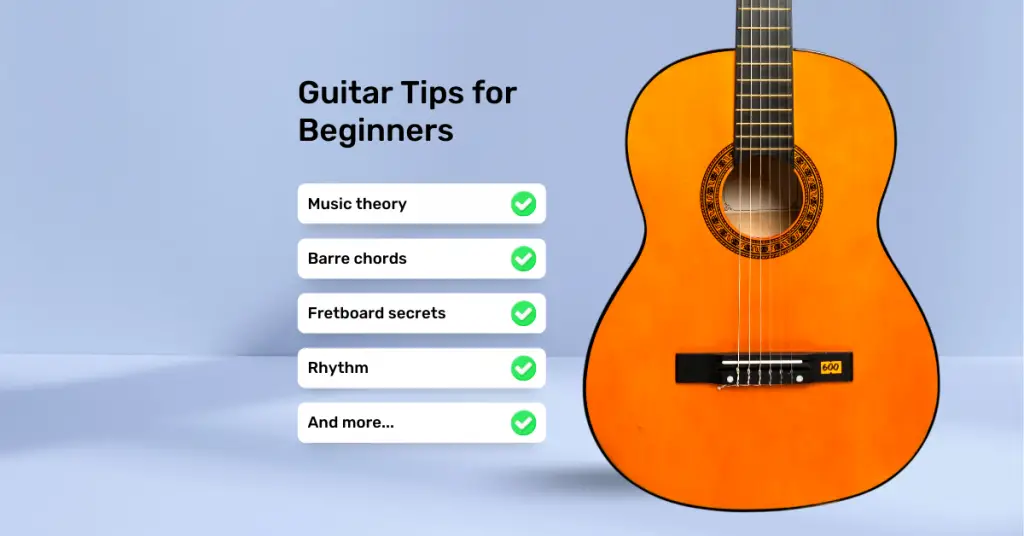Table of Contents
What is G7?
G7 is a dominant 7th chord. You’ll usually see it written and abbreviated as G7, rather than writing out the full name, G dominant 7.
G7’s notes are G, B, D, F.
It’s most commonly used and seen as the V chord in the key of C Major.
Which fingers are used for both the C and G7 chords?
There are 3 fingers used for both the C and G7 chords in their open positions: index (1), middle(2), and ring(3). This is shown in the chord diagrams below.


How to play G7?
You’re going to look at 7 fundamental ways to play the G7 chord on guitar. These are shown with chord charts.
I’ve noted which CAGED Shape each of these chords come from. Remember this, and it will be easier to play dominant 7th chords as a whole.
Open G7
This is the G7 open chord, which also represents the G7 CAGED shape.
This is the most popular version of the G7 chord on guitar, and likely the first version that you’ll see in guitar books and songs.
It’s very similar to an open G chord. It becomes a 7th when you take the 3rd fret on high E (your root note) and move it to the 1st fret on high E (your flattened seventh note).

Single finger G7
This is the simplest form of G7, which makes it very popular for kids.
It’s one of the first 3 chords taught in the Alfred’s Kid’s Guitar book, which I use to teach kids guitar.

G7 Based on Open E7
This G7 is easy to remember if you know your open E7 chord.
You’re simply taking your open E7 and moving the root note up 3 frets, which gets you to G7.
This is a barre shape. Check out this article if you don’t know how to play barre chords.

G7 Based on Open A7
This G7 has the same structure as an open A7 chord.
Once again, for this shape you’ll need to know how to play barre chords.
It starts at the 10th fret, and it will be easiest to play with your ring and pinky fingers.
You can also play this as a 3-finger chord by removing the notes on the A and High E strings. The result will be a rootless, 3-note G7 chord.

G7 Based on Open D7
This is one of the easier shapes to play. Rearrange your open D7 chord by using the fingering shown in the photo. (Place fingers 3,2, and 4 on the G, B, and High E strings.)
Simply slide your open D7 shape up to the 6th fret and place your index finger on fret 5. That’s it!

G7 Based on Open C7
If you know open C7 you can easily play this chord by sliding the shape up 5 frets.
This moves your A string root note (C) to a new root note, G! The result is G7.

G7 Jazz shape
This is my favorite G7 jazz shape. It’s similar to the shape based on Open E7, but you take away the notes on the A and high E strings.
Play the chord using the fingering shown below, and use your index finger to mute the A string. That will allow you to strum through the chord, rather than pluck the chord.
You can also move the G note from the 3rd fret of low E to the 3rd fret of high E, in which case you’ll only play the 4 highest strings (D, G, B, and E)

Songs that use G7
Here’s a list of songs that use the G7 chord.
G7 is the V chord in the C major scale, which makes it an extremely common chord.
G7, and dominant 7th chords in general, are especially relevant in blues, jazz, folk, and funk.
This doesn’t mean it’s not used in pop, country, or rock. However, a regular major chord is usually preferred in these genres, especially as the root chord, because they don’t cause tension.
Nevertheless, learn some songs that have the chord.
You can also apply G7 by substituting your regular G chord for it. This works best when you’re not using G as a root chord.
G7 Chord Summary
Start by learning the Open G7 shape. You can move onto the other shapes once you have that down.
The other shapes will be easy to learn as long as you’re remembering to relate the shapes back to their open CAGED forms.
Don’t forget to try out G7 in some songs! Try using it in a composition of your own.
Leave a comment if you have any further questions about the G7 chord!
Thanks for reading, and rock on!



